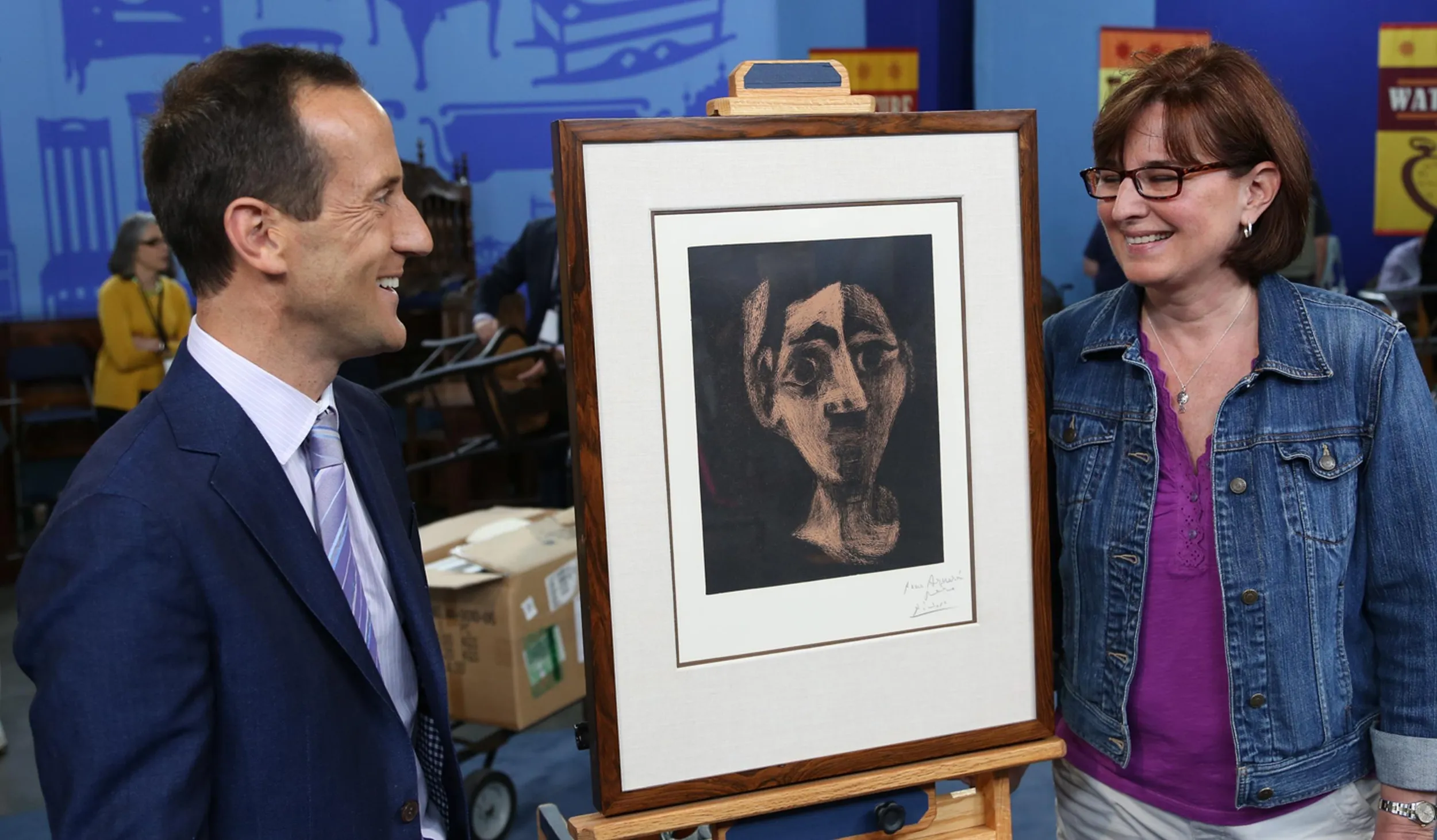GUEST: Well, I purchased it at a moving sale about a year ago. The people were downsizing and they didn't have room for it in their new house. They had asked other members of the family if they were interested in it, and they were not. And I was told that it's an Italian piece and they said it was 100 years old. And beyond that, that's all I have.
APPRAISER: Well, it's very interesting, because I believe this is Swedish.
GUEST: Okay.
APPRAISER: And I think it's probably about 70 years old. I think this piece was probably made around 1935 or maybe as late as 1950. And it's very close to the work of a cabinetmaker in Stockholm named Carl Malmsten. M-A-L-M-S-T-E-N. Carl Malmsten's work has a lot of hallmarks that are seen on this cabinet. I think reasonably we can assume that this is a work by him, his workshop, or someone working very closely to his workshop. What we have is a neoclassical style cabinet. It's in the style of the late 18th century, very thin, tall, elegant legs. A very formal, tight, rigid structure. If this was Italian, it would be a little bit more over-the-top. It would have a little bit more character. It would be a little bit more robust. The Swedes and a lot of the Nordic countries like a very elegant, refined, very tight composition in cabinetmaking.
GUEST: All right.
APPRAISER: So what we have here is a drop-front desk panel that is elaborately inlaid with various fruit woods and hard woods. And it has a seabird here. And a seabird here. It has a dolphin here. It has tridents. So when you see tridents and dolphins and seabirds, you think maritime city. Stockholm is one of the great maritime cities.
GUEST: Excellent, excellent.
APPRAISER: And that's where Carl Malmsten was working. It also has a few other elements like this very large initials, EFL. And also a small, single die on the left side of the panel. And I think those are probably very personal items that the original owner probably would have asked Malmsten to create. The cabinet is mostly made from walnut, and we have a lot of secondary woods on the inside that also match the Swedish known cabinetworks. What did you pay for it at your estate sale?
GUEST: I paid $200.
APPRAISER: Really? That's great.
GUEST: I was there early.
APPRAISER: Have you ever had it appraised or has anyone ever told you what they think it might be worth?
GUEST: No.
APPRAISER: So because it's unsigned I'm attributing it to Carl Malmsten. And as an attributed work, it would sell for between $3,000 and $5,000.
GUEST: Okay.
APPRAISER: If we can positively ID it through catalogues and pictures, which I think we might be able to do, I think that it would be at auction, estimated at $4,000 to $6,000, maybe even $6,000 to $8,000.
GUEST: Excellent, excellent.
APPRAISER: In Sweden I think we would see that estimate go up quite a bit.











